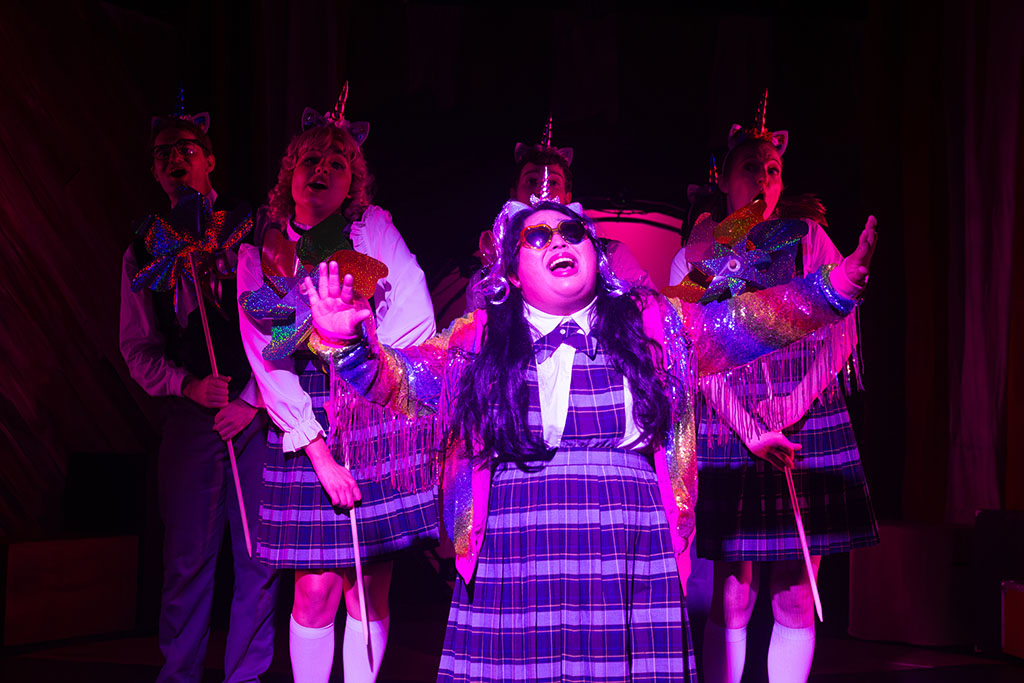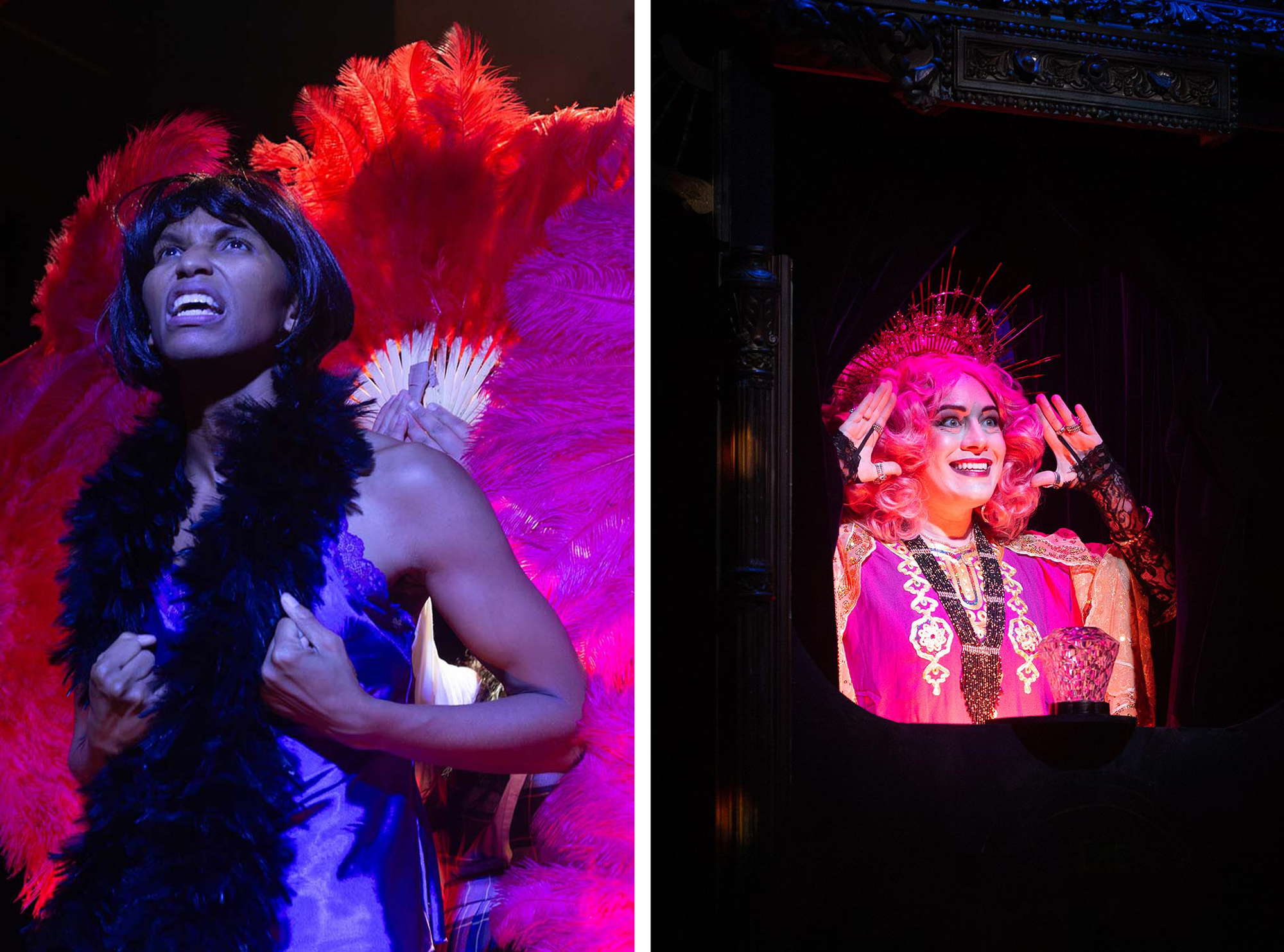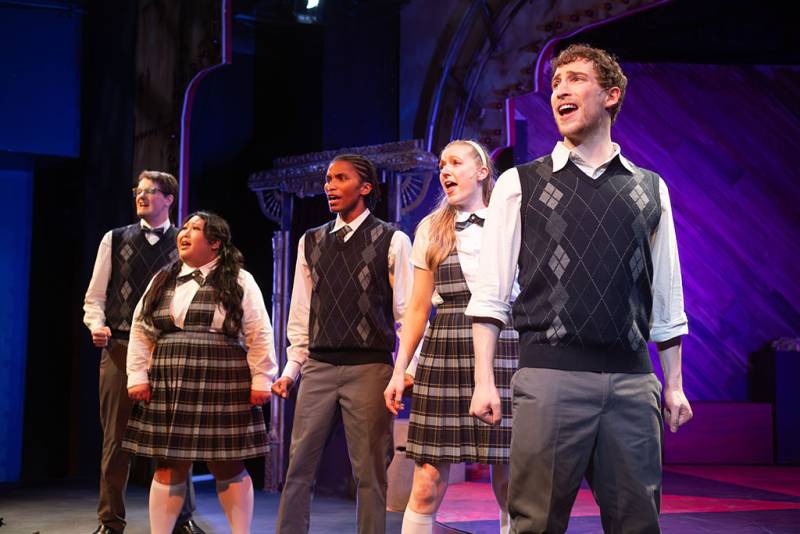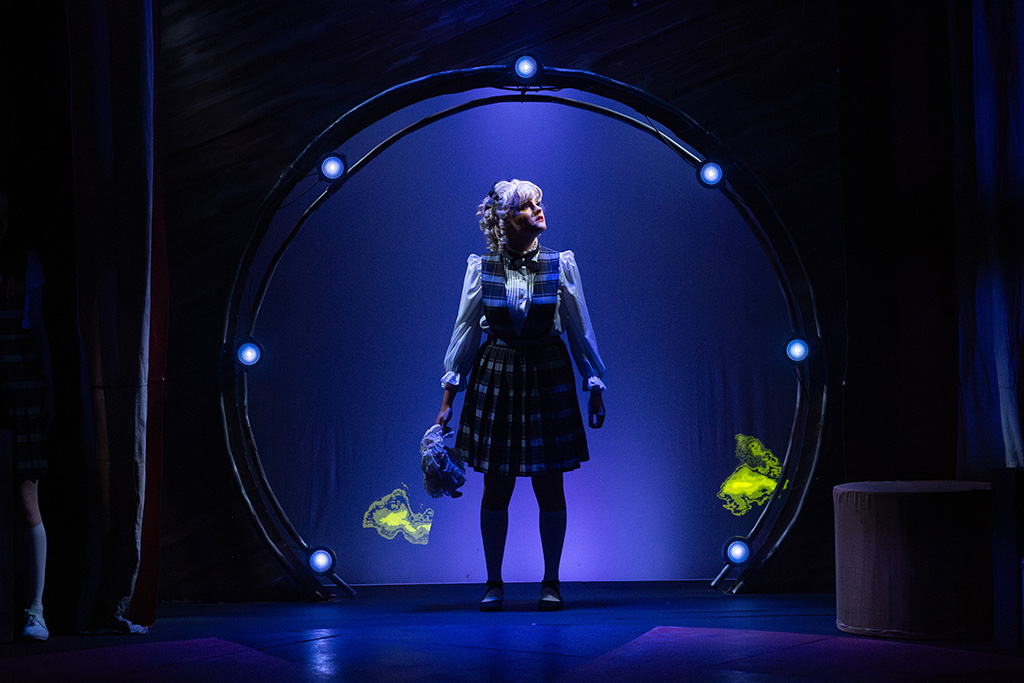TikTok’s algorithm revives all manner of cultural errata: the Cocteau Twins, baggy jeans, Juno. Some of it is inexplicable (“Running Up That Hill”? Really?), while other Gen Z revivals make complete sense, like the 2008 musical Ride the Cyclone.
In the show, a group of high school choir students thrown from a derailed roller coaster at a local carnival are sent into purgatory, where they must vote unanimously for only one among them to go back to Earth and experience life anew.
Death, competition, popularity, sex — these are constant obsessions of the American teenager. So it’s no surprise that Ride the Cyclone’s run at the New Conservatory Theatre Center in San Francisco has been extended due to high demand. What may be a surprise is that, in the hands of director Stephanie Temple, the production is thoroughly enjoyable, no matter if you’re 13 or 59.

Anne Norland adroitly drives the action as Ocean, a peppy overachiever who immediately argues for herself to be the one that gets to return to life. As her deferential friend Constance, Sage Alberto displays expert dry wit and comic timing that turns to introspection when she assesses her place in the social hierarchy. Kaylyn Dowd nails the role of The Amazing Karnak, the Zoltar-esque fortune telling machine that orchestrates the students’ game of mortality.
Meanwhile, Noel (an effervescent Jon Gary Harris) is overdramatic, very gay, and yearning for a grittier life — or, at least, one more meaningful than working at the Taco Bell in the mall. Mischa (Matt Skinner) puts on a gangsta veneer to cloak his passion, and Milo Boland’s Ricky, mute on Earth but reacquainted with his voice in purgatory, gets to speak his innermost desires (spoiler alert: it involves cats).

If the story hangs a little raggedly at times, it at least avoids the cliché of putting each student into a different high school clique, focusing instead on their family background, personality and outlook on life. And while each character’s featured song doesn’t always work as an argument to be brought back to life (most, in fact, are simply teen fantasies writ large), the larger purpose, I think, is to show the hopes, dreams and fragility of young lives.



